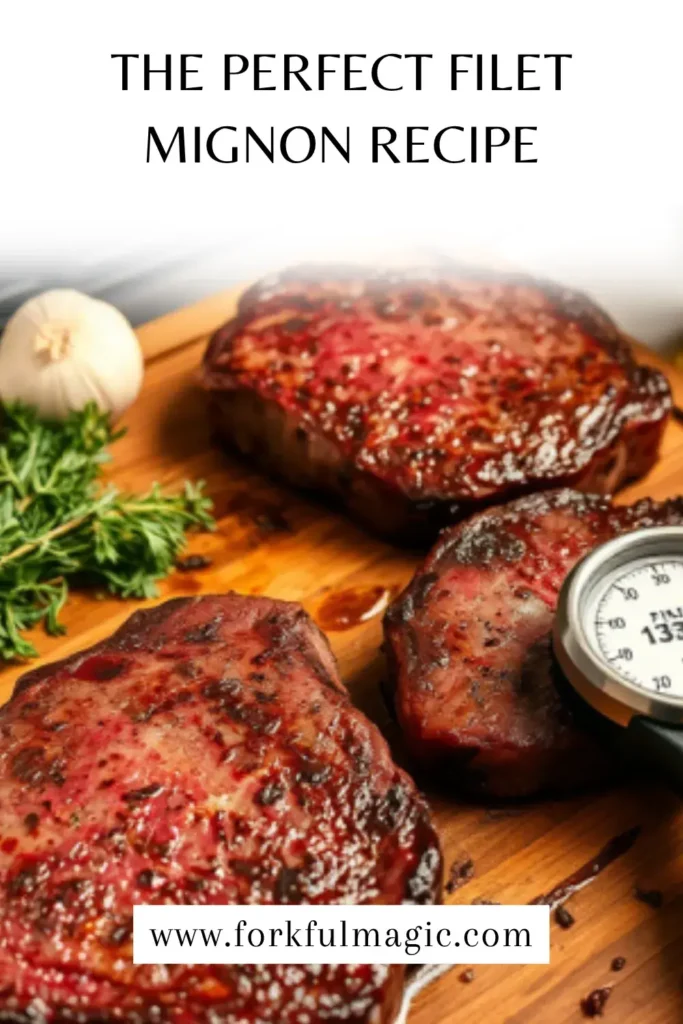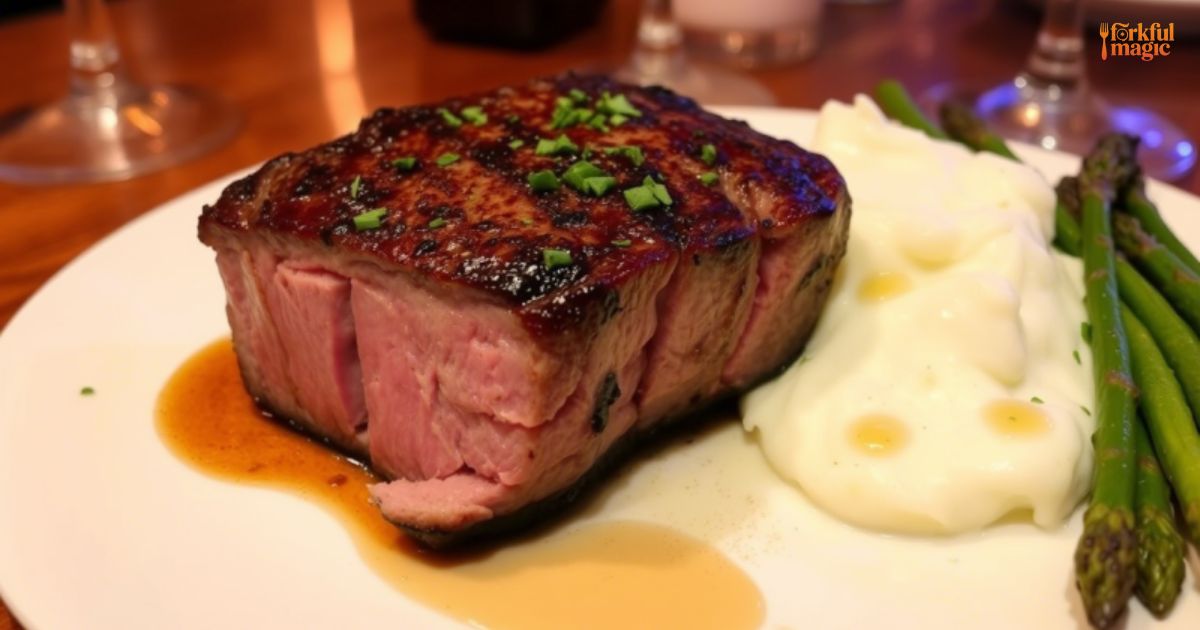There’s something magical about a perfectly cooked filet mignon. I still remember the first time I seared one to golden-brown perfection. The aroma filled the kitchen, teasing my senses. It was an unforgettable moment. This cut of beef is not just a meal; it’s an experience—a tender, buttery slice that melts in your mouth. So, let’s dive into the art of making the perfect filet mignon.
This recipe is special because it combines simplicity with sophistication. You don’t need a ton of ingredients or fancy techniques. Just a few high-quality components and the right methods can turn an average dinner into a five-star dining experience.
Ingredients & Substitutions
Essential Ingredients
- Filet Mignon (8 oz per serving)
- Kosher Salt (to taste)
- Freshly Ground Black Pepper (to taste)
- Olive Oil (2 tablespoons)
- Unsalted Butter (2 tablespoons)
- Fresh Thyme (a few sprigs)
- Garlic (2 cloves, smashed)
High-Quality Substitutions
If you can’t find filet mignon, a ribeye or sirloin can work, though they won’t be as tender. For those avoiding red meat, a thick-cut chicken breast or a portobello mushroom can be an excellent alternative. Use ghee instead of butter for a dairy-free option.
When it comes to herbs, fresh is always better. But dried thyme can work in a pinch. Just remember, dried herbs are more concentrated; use about a third of the amount.
Ingredient Insights
Choosing the right cut is crucial. Filet mignon, part of the tenderloin, is prized for its tenderness. Look for a bright red color and a good amount of marbling. The marbling adds flavor and juiciness.
Olive oil should be extra virgin for the best flavor. It has a fruity aroma that enhances the meat. Don’t skimp on salt and pepper; they amplify the natural flavors beautifully.
Step-by-Step Instructions

1. Preparing the Steak
Start by taking the filet mignon outta the fridge about 30 minutes before cooking. Letting it come to room temp helps it cook evenly. Pat it dry with paper towels—moisture is the enemy of a good sear.
2. Seasoning
Generously season both sides with kosher salt and freshly ground black pepper. Don’t be shy! This is where flavor begins.
3. Searing the Steak
Heat a heavy skillet, preferably cast iron, over high heat. Add olive oil once the pan’s hot. You want it shimmering, almost smoking. Carefully place the steak in the pan, laying it away from you to avoid splatters.
Expert Tip: Don’t move the steak for the first 3-4 minutes. Let it develop a crust.
4. Flipping the Steak
Once a nice brown crust forms, flip the steak using tongs. Add the butter, thyme, and smashed garlic to the pan.
Common Mistake: Don’t overcrowd the pan! If you’re cooking more than one steak, use a larger skillet or cook in batches.
5. Basting
As the steak cooks, tilt the pan and use a spoon to baste the steak with the melted butter. This adds flavor and keeps the meat moist. Cook for another 3-4 minutes for medium-rare. Use an instant-read thermometer to check the temperature; 130°F is your sweet spot.
6. Resting
Once done, transfer the steak to a plate and let it rest for 5-10 minutes. This helps the juices redistribute, ensuring a juicy bite.
Cooking Techniques & Science
Searing is your best friend. It caramelizes the meat’s surface, creating that beautiful crust while locking in juices. This process, called the Maillard reaction, happens at high heat.
Using a cast-iron skillet is essential. It retains heat well and distributes it evenly, which is perfect for searing.
The Basting Technique
Basting with butter and herbs adds depth to the flavor. As the butter melts, it combines with the steak’s natural juices, creating a rich sauce. The garlic and thyme infuse their essence into the meat, elevating your dish.
Serving & Pairing Suggestions
Presentation matters. Slice the filet mignon against the grain and fan it out on the plate. Drizzle some of the pan juices over the top for added flavor.
Complementary Dishes
Pair your filet mignon with roasted asparagus or garlic mashed potatoes. A fresh arugula salad with a lemon vinaigrette can cut through the richness beautifully.
For drinks, a full-bodied red wine like Cabernet Sauvignon or a rich Merlot complements the steak perfectly.
Conclusion
Making the perfect filet mignon isn’t just about the steak; it’s about the techniques and care you put into it. Keep the ingredients simple, and let quality shine through. Searing, basting, and resting are key steps that elevate the dish.
For a creative twist, consider adding a splash of balsamic reduction or a sprinkle of blue cheese crumbles on top before serving.
FAQs
1. How do I know when the filet mignon is done?
Use a meat thermometer. For medium-rare, aim for 130°F.
2. Can I cook filet mignon on the grill?
Absolutely! Preheat the grill and follow the same searing and basting techniques.
3. What if I prefer my steak well-done?
Cook it longer, but be cautious; it can dry out. Aim for 160°F for well-done.
4. Should I marinate filet mignon?
Typically, no. The cut is so tender that it doesn’t need much. A simple seasoning works best.
5. Can I save leftovers?
Yes! Store in an airtight container in the fridge for up to three days. Reheat gently to avoid overcooking.
Now, roll up your sleeves and get ready to impress with your perfect filet mignon! You’ll be savoring the tender, juicy bites in no time. Happy cooking!








